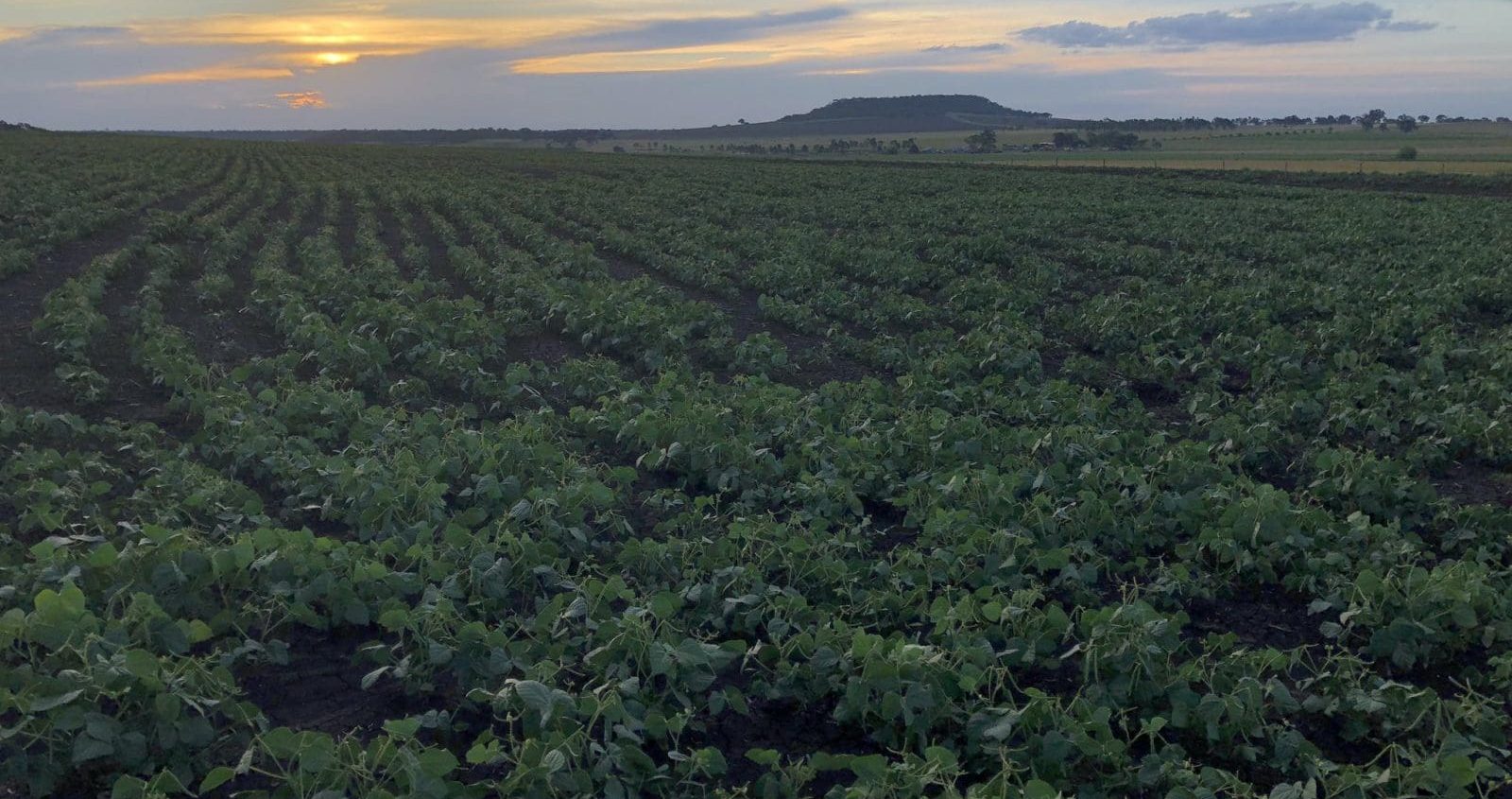
A mungbean crop north of Allora. Photo: Kerry McKenzie, PulseAg Consulting
THE AUSTRALIAN mungbean industry could set a new record for production this harvest, with strong yields expected from an estimated 80,000-100,000 hectares planted.
The pulse has also expanded into new growing regions this season, including South Australia and north-east Queensland.
The industry set the current record in 2016 with 150,000 tonnes produced, close to triple last season’s very small harvest of around 55,000t due to the combination of flooding at planting time and dry conditions at the end of the growing season.
Pulse Australia northern extension agronomist Paul McIntosh said if positive conditions persist and hectares planted are at the top end of predictions, the industry is within range of creating a new production record.
“We believe it is the largest crop since 2016, maybe the largest crop ever even if the rain keeps going,” Mr McIntosh said.
He said the widespread rainfall in key growing regions late last year made mungbeans an attractive crop for growers who also planned to plant a winter crop.
“We had very favourable conditions for the mungbean growing regions of Queensland and New South Wales.”
Australian Mungbean Association vice president and Woods Group accumulation and sales manager Steve Foran said both crop yields and quality would be strong if favourable weather conditions persisted.
“The mungbeans in the field look magnificent,” Mr Foran said.
“The seeding pods are flowering; they are doing what they should be doing now.
“The seasonal conditions are looking good so far and there is strong optimism in the market.”
“There’s enough moisture in the soil now to get them home, but a further 25-40mm at grain-fill would set them off.
“Towards the end of March to the first half of April we will start to see the first summer crop harvest coming off.
“There are some patches of earlier crop around but there are only pockets of them.
“There is also a February crop, planted two weeks ago, in Central Queensland as well.”
Mr McIntosh said that if rain comes at the right time, many growers should see strong yields.
“If everywhere keeps going as it is…I think 1.5t to the hectare is realistic.”
New cropping regions
Mr Foran said the positive conditions saw an increase in mungbean plantings throughout northern NSW.
While mungbeans are traditionally grown in northern NSW, many growers opt to plant the more resilient sorghum as a summer crop.
“In Moree, Mungindi and the rest of northern NSW there’s a fairly good-sized plant.”
Mr McIntosh said growers were even experimenting with mungbeans in regions that traditionally do not grow summer crops.
Mr McIntosh said he was consulting with one South Australian grower who had planted a 50ha crop as a “proof of concept” and others in Horsham in western Victoria.
“Mungbeans are going from the Gulf to Victoria and it’s the same varieties all the time as well.
“They have really settled into that notch of being flexible where we can grow them and when we grow them.”
He said there was also continued interest in pockets of NSW Riverina.
“In the West Wyalong and Griffith area they have been growing mungbeans for a while now and they’re still persisting with them in those wetter summer years.
“With more summer rain they are willing to having a crack at something short and quick that does the trick.”
FAW resistant
Mr Foran said growers were also pleased to see mungbean crops escaping impacts from fall armyworm, which is being seen in sorghum, corn and millet crops this season.
“What I have heard consistently is that fall armyworm is giving everything else around a flogging beside mungbeans.”
Mr McIntosh said agronomists were concerned that the “misguided moth” could jump from the coarse grain paddocks into a neighbouring pulse crop.
He said he had one grower who had FAW hit errant corn plants which had grown among a mungbean crop.
“Even though [FAW] decimated the corn plants, the mungbeans were not effectively touched or challenged much as all as far as economic damage goes.”
Mr McIntosh said this season might show growers that mungbeans may be an effective alternative to other crops when FAW infestations are at higher levels.
Grain Central: Get our free news straight to your inbox – Click here

HAVE YOUR SAY